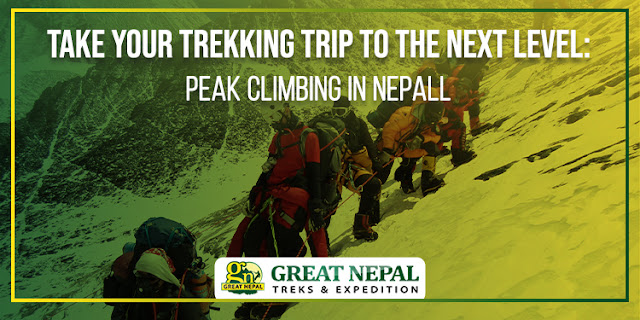Tour in Nepal
WHAT ARE THE ATTRACTIONS OF NEPAL?
Mammals: 185 species
Birds: 850 species
Flora: 2532 species of vascular plant
World heritage sites10 world heritage sites declared by UNESCO in Nepal
World heritage sites (Cultural)
Kathmandu Durbar square
Patan Durbar square
Bhaktapur Durbar SquareSwoyambhunath Stupa
Bouddhanath Stupa
Changunarayan Temple
Pashupatinath Temple
Lumbini Garden
World heritage sites (Natural)
Everest National Park (1148sq. km)
Chitwan National Park (932 sq. km)
Home to Endangered Species
Royal Bengal tiger, One horned rhino, Snow - leopard, Red panda, Brown bear, Assamese macaque, Genetic dolphin, wolf, wild elephant , giant horn-bill, swamp deer, wild yak, Tibetan antelope, Black buck, four horned antelope, Musk deer, Pigmy hog, Hasped hare, Pangolin, Gharial, Indian bustard, Saras crane, Impend pheasant, Python, etc..
A Living Cultural Heritage Shamanisms, Pan-animism and Witchcraft are still practiced in remote regions Temples, shrines, monuments and monasteries, Living Goddess "Kumari".
Mammals: 185 species
Birds: 850 species
Flora: 2532 species of vascular plant
World heritage sites10 world heritage sites declared by UNESCO in Nepal
World heritage sites (Cultural)
Kathmandu Durbar square
Patan Durbar square
Bhaktapur Durbar SquareSwoyambhunath Stupa
Bouddhanath Stupa
Changunarayan Temple
Pashupatinath Temple
Lumbini Garden
World heritage sites (Natural)
Everest National Park (1148sq. km)
Chitwan National Park (932 sq. km)
Home to Endangered Species
Royal Bengal tiger, One horned rhino, Snow - leopard, Red panda, Brown bear, Assamese macaque, Genetic dolphin, wolf, wild elephant , giant horn-bill, swamp deer, wild yak, Tibetan antelope, Black buck, four horned antelope, Musk deer, Pigmy hog, Hasped hare, Pangolin, Gharial, Indian bustard, Saras crane, Impend pheasant, Python, etc..
A Living Cultural Heritage Shamanisms, Pan-animism and Witchcraft are still practiced in remote regions Temples, shrines, monuments and monasteries, Living Goddess "Kumari".
Adventures
1. World’s most popular trekking trails such as Annapurna Circuit trekking and Everest Base Camp Trek.
2. Best arenas for Extreme & Adventure Sport tourism such as mountaineering, cannoning, paragliding, mountain biking, kayaking, rafting, bungee jumping, high altitude marathon etc.
3. Karnali in Simikot as one of the best rivers in the world for kayaking and most of the upstream Nepalese rivers offer the best rapids for white-water rafting
1. World’s most popular trekking trails such as Annapurna Circuit trekking and Everest Base Camp Trek.
2. Best arenas for Extreme & Adventure Sport tourism such as mountaineering, cannoning, paragliding, mountain biking, kayaking, rafting, bungee jumping, high altitude marathon etc.
3. Karnali in Simikot as one of the best rivers in the world for kayaking and most of the upstream Nepalese rivers offer the best rapids for white-water rafting
National Parks: 11
Wildlife Reserves: Koshi Tappu Wildlife Reserve – 175 sq.km (68 sq.m)
Conservation areas: 6
Hunting Reserve: Dhorpatan Hunting Reserve – 1,325 sq.km (512 sq.m)
Wildlife Reserves: Koshi Tappu Wildlife Reserve – 175 sq.km (68 sq.m)
Conservation areas: 6
Hunting Reserve: Dhorpatan Hunting Reserve – 1,325 sq.km (512 sq.m)
WHAT ARE THE FACTS OF THE HIMALAYAS?
1. The geological age of the Himalaya is approximately 70 million years. It is the youngest Mountain Range in the world.
2. According to Hindu mythology, God Shiva resides in the Himalaya.
3. Nameha Barwa peak is the easternmost and Nanga Parbat is the westernmost peak of the Himalaya.
4. Kumbhakarna is the new name of mount Jannu (7,710 m).
5. Gosainthan (8014m) -the Nepali name for Shisha Pangma.
6. The ideal height gain per day for mountaineers is 1,000 ft above 10,000 ft.
7. Source for rivers such as the Indus, the Yangtze and the Ganga-Brahmaputra. All three are the river systems of the continent of Asia.
8. The third largest deposit of ice and snow in the world, after Antarctica and the Arctic having approximately 15,000 glaciers located throughout the range.
1. The geological age of the Himalaya is approximately 70 million years. It is the youngest Mountain Range in the world.
2. According to Hindu mythology, God Shiva resides in the Himalaya.
3. Nameha Barwa peak is the easternmost and Nanga Parbat is the westernmost peak of the Himalaya.
4. Kumbhakarna is the new name of mount Jannu (7,710 m).
5. Gosainthan (8014m) -the Nepali name for Shisha Pangma.
6. The ideal height gain per day for mountaineers is 1,000 ft above 10,000 ft.
7. Source for rivers such as the Indus, the Yangtze and the Ganga-Brahmaputra. All three are the river systems of the continent of Asia.
8. The third largest deposit of ice and snow in the world, after Antarctica and the Arctic having approximately 15,000 glaciers located throughout the range.
9. The Himalayas are alive geographically! The Indo-Australian plate is still moving at 67 mm per year, and over the next 10 million years it will travel about 1,500 km into Asia
https://www.greatnepaltreks.com/nepal-at-a-glance


Comments
Post a Comment